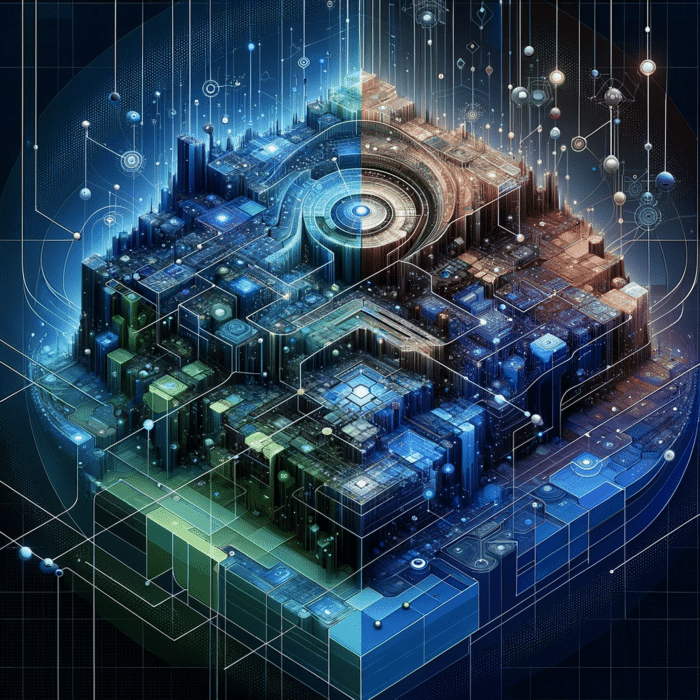How Hierarchical Navigable Small Worlds Enhance Large Language Models
Blending Hierarchical Navigable Small Worlds with AI: The Future of Customized Language Models
https://github.com/marciokugler/llms-demo-chat
Today, we delve into the intersection of Hierarchical Navigable Small Worlds (HNSWs) and large language models (LLMs). Let’s explore how vector databases create these intricate worlds, providing custom-tailored AI experiences.
The integration of HNSWs and LLMs represents a significant leap in AI customization. Creating domain-specific ‘small worlds’ allows AI to offer more precise and relevant assistance across various sectors.
LLMs often struggle with capturing the nuances and contexts of specific domains, such as medicine, law, or finance. This is because LLMs are trained on massive and diverse corpora of text, which may not reflect the specialized vocabulary, syntax, and knowledge of a particular domain. Moreover, LLMs may not be able to handle complex queries that require reasoning and planning in physical or virtual environments, such as understanding spatial relations, object permanence, or causal effects.
Understanding Hierarchical Navigable Small Worlds
What are HNSWs?
Advanced data structures for efficient navigation through complex networks.
Imagine a multi-layered map, each layer with a different detail level.
Hierarchical Navigable Small Worlds (HNSWs), are graph-based structures that represent domain-specific knowledge and contexts in a compact and efficient way. HNSWs can be used to augment LLMs with additional information and capabilities, such as:
Semantic similarity: HNSWs can store and retrieve vector representations of words, phrases, sentences, or documents, which capture their semantic meaning and similarity. This can help LLMs to find relevant and coherent responses to user queries, as well as to generate diverse and creative content.
Efficient large-scale retrieval: HNSWs can enable fast and accurate similarity search over large and high-dimensional datasets, such as images, videos, or audio. This can help LLMs to retrieve the best matching items from a large corpus, such as information retrieval or recommendation systems.
Embodied knowledge and skills: HNSWs can model physical or virtual environments, such as maps, games, or simulations, and allow LLMs to interact with them through natural language. This can help LLMs to learn embodied knowledge and skills, such as reasoning and planning, object permanence and tracking, spatial and temporal relations, and causal effects.
The Role of Vector Databases in AI
Functionality of Vector Databases
- Stores data as numerical vectors, making it AI-compatible.
- Converts text into vectors representing words’ meanings.
A vector database is a type of database that stores and manages data as high-dimensional vectors, which are numerical representations of specific features or characteristics. In the context of LLMs or NLP, these vectors can vary in dimensionality, spanning from just a few to several thousand, based on the intricacy and detail of the information1.
Vector databases have advanced indexing and search algorithms that make them particularly efficient for similarity searches, a technique of searching for items most similar to a given item. This is one of the key requirements for augmenting prompts through contextual data in generative AI2.
Customizing AI for Specific Domains
Benefits of Customization
- Domain-specific models like healthcare or finance LLMs.
- Accurate and contextually relevant outputs. To illustrate how vector databases and HNSWs can be used to enhance LLMs, we provide some examples of domains and tasks that can benefit from this approach:
Benefits and Applications
Expanding Possibilities
- Customized LLMs for business, research, and education.
More accurate customer service and targeted learning assistance.
Medical domain: A vector database can store and manage vector representations of medical terms, concepts, symptoms, diagnoses, treatments, drugs, and procedures. An LLM can use the vector database to generate or retrieve relevant and accurate medical information, such as answering questions, providing suggestions, or writing reports.
Legal domain: A vector database can store and manage vector representations of legal terms, concepts, cases, statutes, regulations, contracts, and documents. An LLM can use the vector database to generate or retrieve relevant and accurate legal information, such as answering questions, providing advice, or drafting documents.
Financial domain: A vector database can store and manage vector representations of financial terms, concepts, indicators, transactions, reports, and documents. An LLM can use the vector database to generate or retrieve relevant and accurate financial information, such as answering questions, providing analysis, or making predictions.
Gaming domain: A vector database can store and manage vector representations of game elements, such as characters, items, locations, events, and actions. An LLM can use the vector database to generate or retrieve relevant and creative game content, such as dialogues, narratives, quests, or scenarios.
Education domain: A vector database can store and manage vector representations of educational content, such as concepts, facts, examples, exercises, and assessments. An LLM can use the vector database to generate or retrieve relevant and engaging educational content, such as explanations, illustrations, feedback, or recommendations.
Steps to Create Customized LLMs
- Define the domain and collect relevant data.
- Feed data into a vector database to create a HNSW.
- Explore RAG - Retrieval augmented generation
Integrating HNSWs with LLMs
- Use vector databases to create domain-specific ‘small worlds’.
- Enables LLMs to understand the context and nuances of specific domains.
